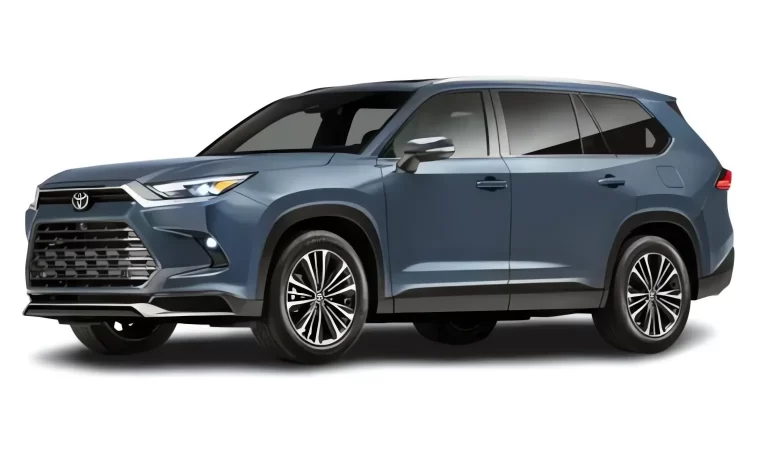
Toyota Grand Highlander: also has enough room behind the third-row seats to fit seven carry-on suitcases.
Is the standard Highlander not big enough for you and your family? Toyota has the answer with the larger and longer 2024 Grand Highlander debuting at the Chicago Auto Show. A mid-size family SUV on the same platform as the smaller Highlander offers two hybrid powertrains, three rows of seats that can fit up to eight passengers, and everything else you need for a long-distance road trip.
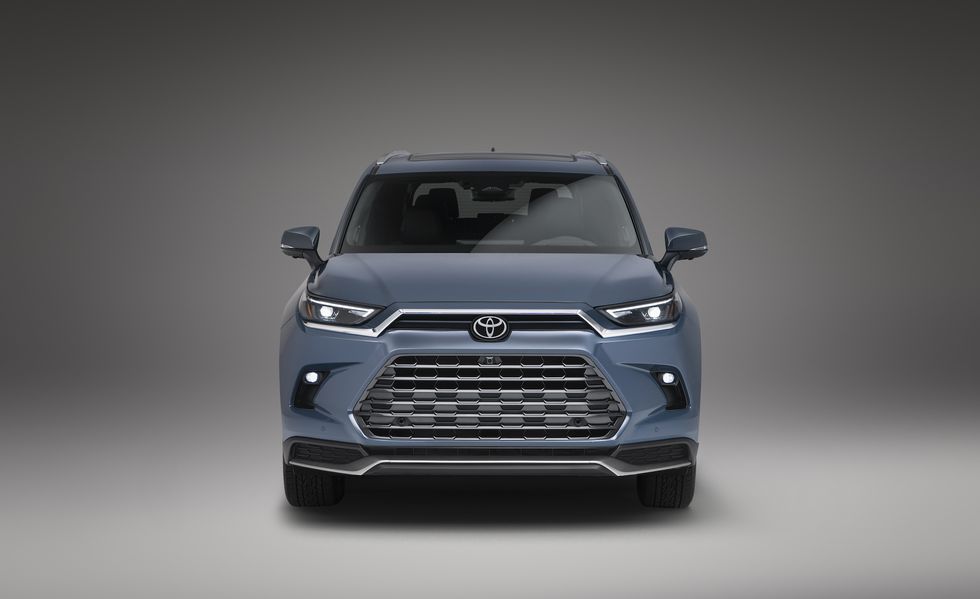
Under the Hood
The Grand Highlander has three different powertrains; two are shared with the regular Highlander model. The base combination is a 265-hp turbocharged 2.4-litre four-cylinder with either front- or all-wheel drive and an eight-speed automated transmission. The Grand Highlander Hybrid shares the same hybrid powertrain as the Highlander Hybrid, which combines a 2.5-litre four-cylinder engine and two electric motors to provide 243 horsepower.
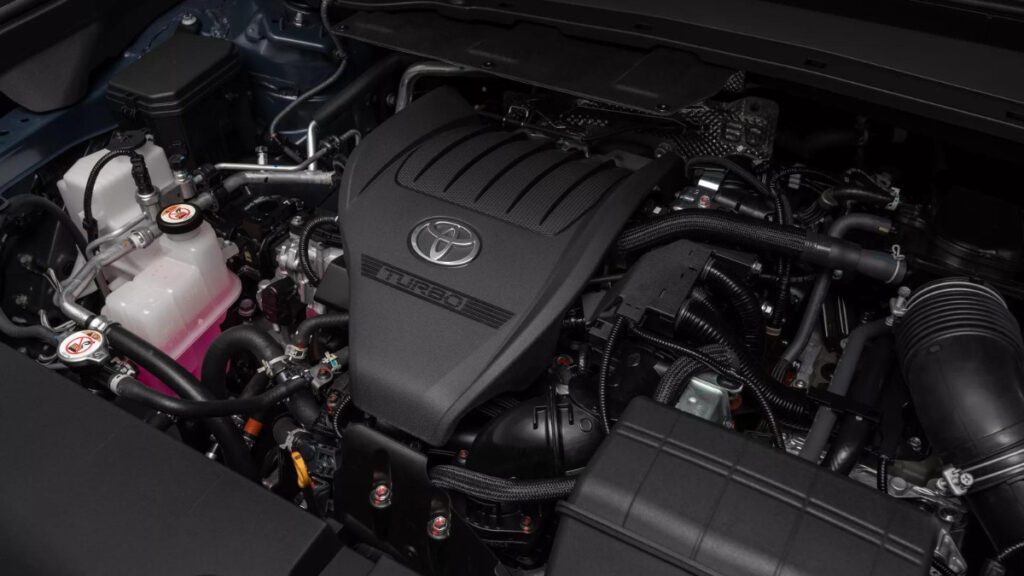
The top-tier model will contain the Hybrid Max powertrain, which combines a turbocharged 2.4-litre engine with an electric motor to produce 362 horsepower. Toyota claims the Grand Highlander can reach 60 mph in 6.3 seconds and tow up to 5000 pounds when equipped with the Hybrid Max system.
The highest-trim models will get Toyota’s Hybrid Max drivetrain. First introduced with the Crown, the hybrid setup makes 30 more horses (22 kW/30.4 PS) for this large SUV, churning out a total of 362 hp (270 kW/367 PS) and 400 lb-ft (542 Nm) of torque.
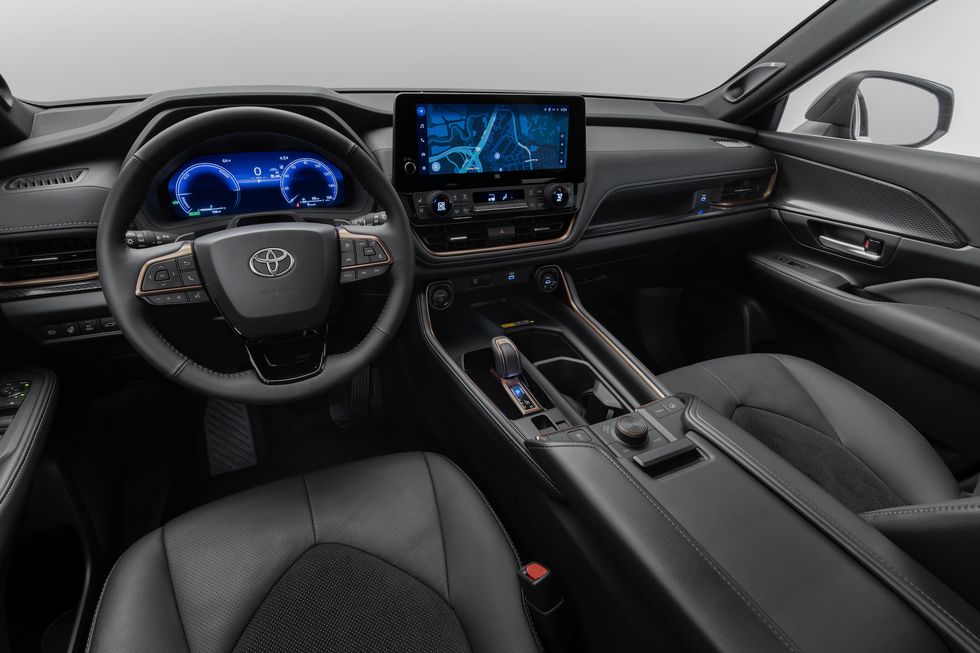
The Interior of the Cabin
The Grand Highlander’s objective is to be huge, not to set 0-60 times. With the seats folding, the SUV will have a space of up to 98 cubic feet (2,775 litres), 14 cubic feet (396 litres) larger than the Highlander. According to the company, the trunk will be large enough to store seven carry-on baggage, even with the third-row seats in place.
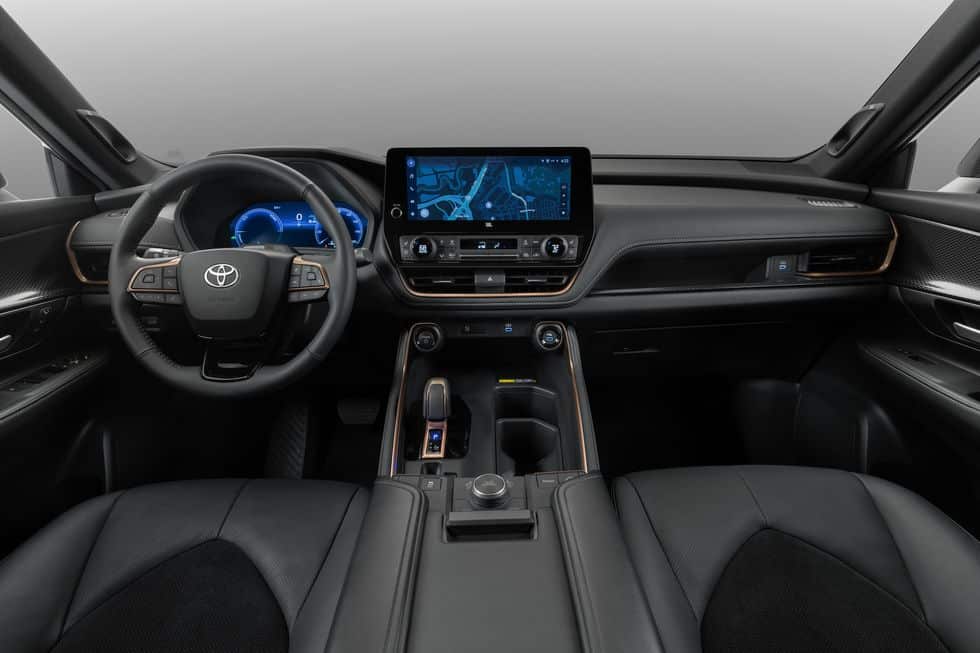
The manufacturer also claims that the last row of seats is large enough for adults to sit comfortably and that each passenger will get a USB connector, a space to keep a smartphone or a tablet, and two cupholders.
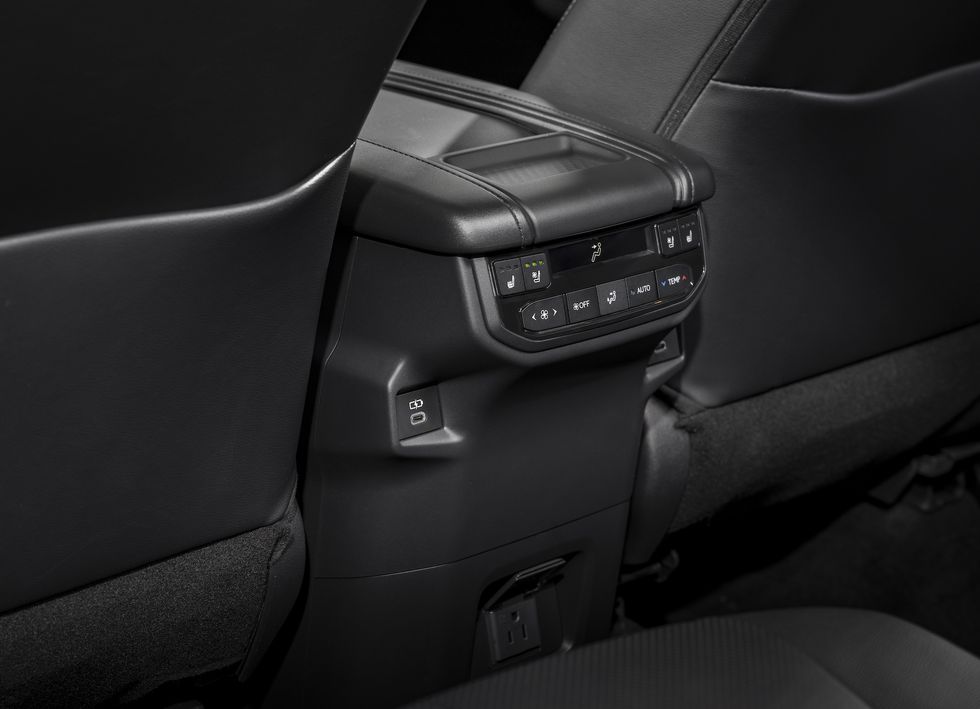
The Grand Highlander has 13 cupholders and seven USB-C connections for all your charging needs. Second-row passengers will also have access to an air-conditioning control panel, and the Grand Highlander can be outfitted with captain’s chairs or a bench. Finally, the front seat passengers get a 12.3-inch infotainment screen as standard, as well as wireless Apple CarPlay and Android Auto, and a configurable centre console large enough to house a tablet and two wireless chargers.
Higher specification models have heated and ventilated front seats, a heated steering wheel, a 1,500-Watt power outlet, and a hands-free motorized lift gate.
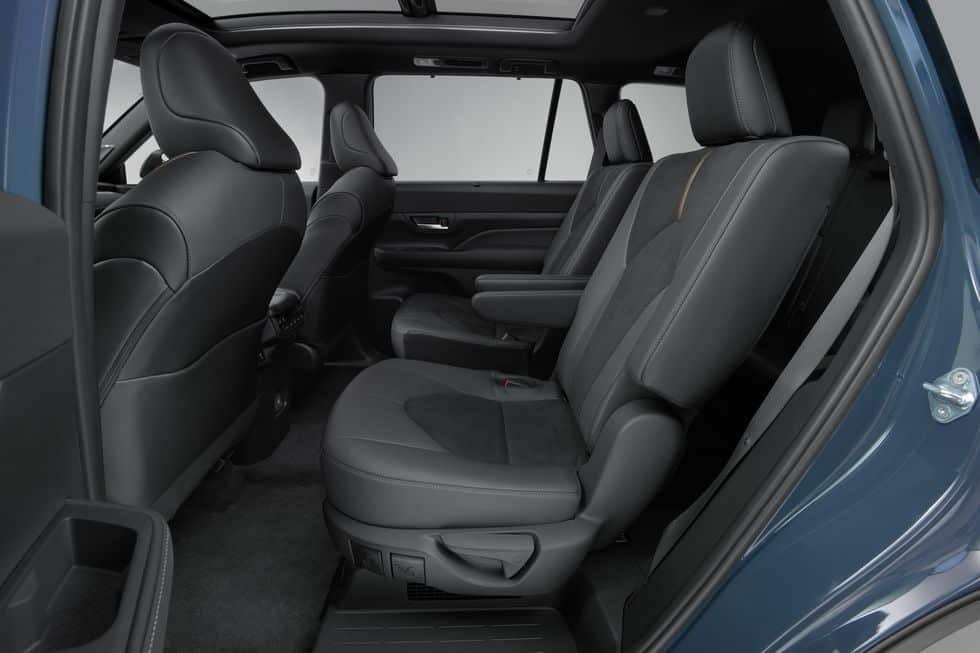
Toyota claims that the Grand Highlander was built to be as comfortable as a living room, with soft materials on the instrument panel, “wood-effect” trim, and a soft armrest made to feel like a “finely crafted sofa.” Leather-trimmed seats may adjust in 10 directions for the driver (eight for the passenger), and the Hybrid Max model receives distinctive Ultrasuede and leather-trimmed seats with bronze-coloured accents, which can be seen above.
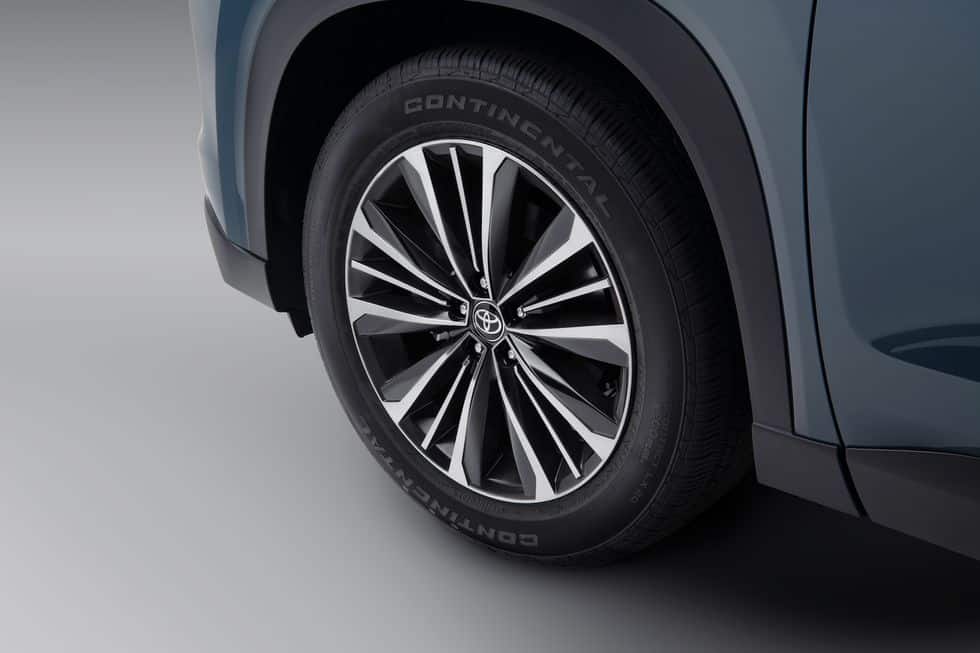
Modern Technology in Toyota Grand Highlander
Toyota has given the Grand Highlander the ability to be upgraded wirelessly. This implies that intelligent features like the voice assistant will remain current with the newest developments and upgrades.
A variety of related services are also available. Customers are given a 10-year trial of services such as Toyota’s emergency help, 24/7 roadside assistance, a stolen car locator, and others. A 10-year test is required to access vehicle health data, maintenance records, and other features.

Standard features include pre-collision warnings, lane departure alerts, adaptive cruise control, lane tracing aid, road sign identification, automatic high lights, and proactive driving assist. The Grand Highlander will also include a one-year free trial of Remote Connected Service, which lets owners use their innovative smartphone to activate the headlights, start the car, lock the doors, and more.
In terms of in-cabin entertainment, the Grand Highlander may function as a Wi-Fi hotspot for up to five devices. An up will provide the soundtrack for the 11-speaker JBL sound system. There’s also a heads-up display, a panoramic view monitor, and Toyota’s innovative driver-aid technology, Traffic Jam Assist.
External Boxier Design
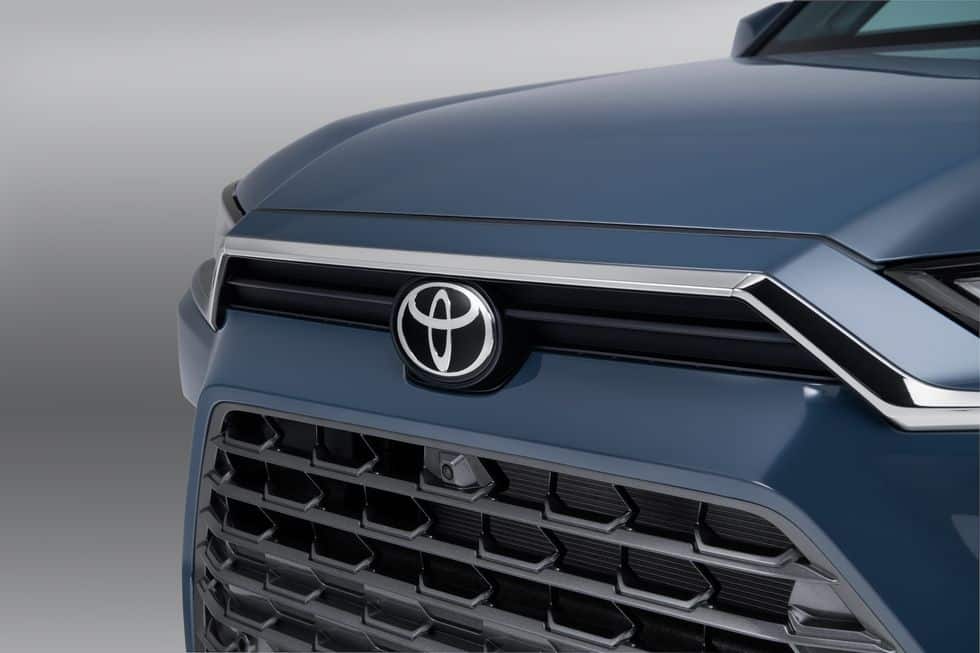
Toyota’s new SUV, which looks more boxy and basic than its smaller sibling, the Highlander, was developed by Calty Design Studios in California. It has body-coloured rear pillars to convey robustness and strength, while smooth surfaces throughout the body express a straightforward, rugged style. The Grand Highlander is available in three trim levels (XLE, Limited, and Platinum), with wheels ranging in diameter from 18 to 20 inches. A panoramic moonroof is also an option.

Features for Driver Help and Safety in Toyota Grand Highlander
All Grand Highlander models include Toyota’s TSS 3.0 suite of driver-assistance systems. The package includes adaptive cruise control, automatic high-beam headlamps, a road-sign recognition system, and the essentials like blind-spot monitoring and automated emergency braking. Visit the National Highway Traffic Safety Administration (NHTSA) and Insurance Institute for Highway Safety (IIHS) websites for more information on the Grand Highlander’s crash test results. The following are important safety features:
- Standard automated emergency braking with pedestrian detection
- Standard lane-departure warning with lane-keeping assist
- Common adaptive cruise control with a lane-centring feature
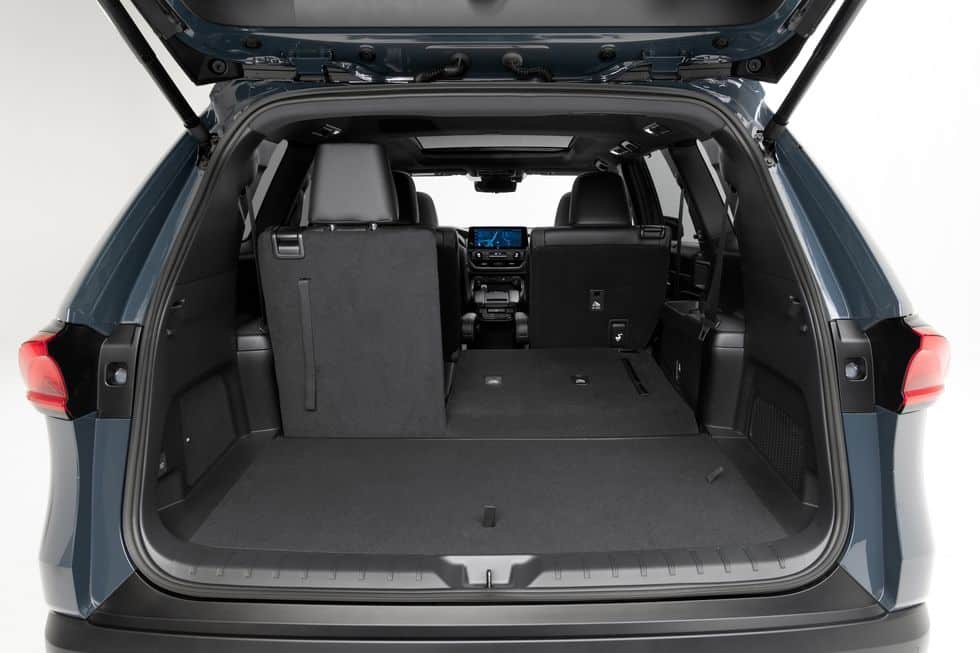
Warranty and Maintenance Protection: Toyota Grand Highlander
Toyota’s warranty coverage is standard in the market; however, owners receive two years of gratis scheduled maintenance, a nice feature that most competitors do not provide. An exceptional hybrid-component warranty covers electrified Grand Highlander models for eight years or 100,000 miles.
- Three years or 36,000 miles is the length of the limited warranty.
- The powertrain warranty is valid for five years or 60,000 miles.
- The contract for hybrid components lasts eight years or 100,000 miles.
- Complimentary maintenance is provided for two years or 25,000 miles.




